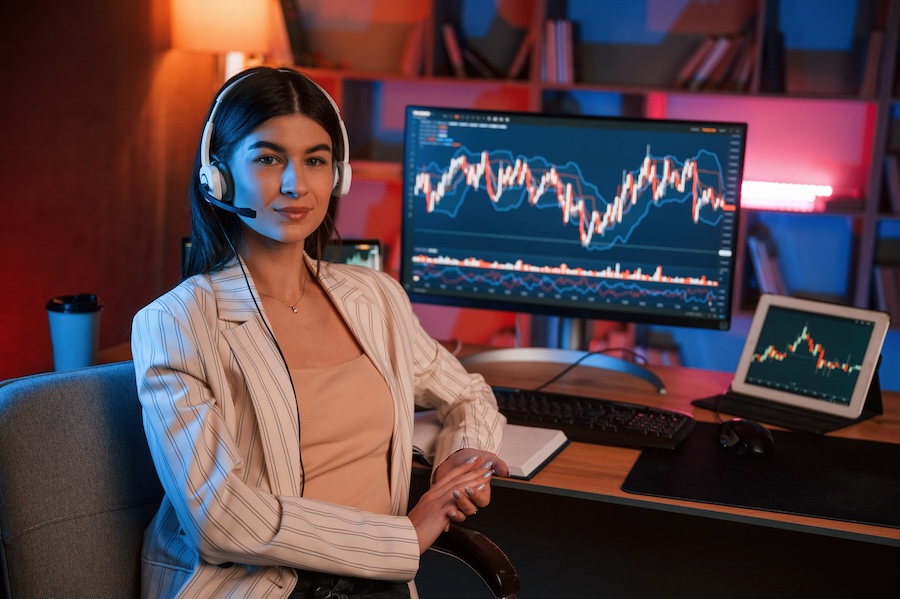
In today’s rapidly evolving financial markets, the debate between manual trading and the use of trading robots is more relevant than ever. Traders constantly seek the most efficient, profitable, and sustainable methods to execute their strategies. This comprehensive comparison sheds light on the critical differences, advantages, and challenges of both manual trading and automated systems, providing an extensive guide to help you decide which trading path aligns with your goals, skills, and preferences.
1. Speed and Execution
Speed is a trader’s best friend; no one can execute a trade as fast as a seasoned trader. Humans can make quick decisions and act rapidly when the market shifts dramatically within seconds.
On the other hand, robots like RobotBulls work tirelessly, never tiring, and can execute trades within milliseconds. Their speed is unbeatable, particularly in high-frequency trading, where the difference between profit and loss can be a fraction of a second.
2. Emotional Elements
The emotional aspect of trading is perhaps the greatest challenge. Fear and greed often lead to irrational decisions. These emotions can be harnessed by a disciplined trader, leading to a deeper understanding of the market.
Trading robots are devoid of emotion, which can be both a blessing and a curse. They will not make illogical decisions out of fear or over-optimism but also lack the human intuition that can sometimes outsmart the market.
3. Strategy Development
Developing a trading strategy is a personal journey for manual traders. It is a reflective process involving technical analysis, fundamental research, and intuition.
Algorithmic trading strategies are created based on hard data and historical patterns. These strategies are not open to interpretation or personal bias, which means they can be back-tested rigorously and often produce consistent results.
4. Adaptability
Traders who can adapt and learn from the market’s changing conditions can be successful. They can turn the tide if their initial analysis proves incorrect and the market proves differently.
In contrast, trading robots can only operate within the parameters set by their algorithms. While these parameters can be adjusted, they are not flexible in real time and may miss emerging trends or sudden changes in the market.

5. Information Overload
Manual traders immerse themselves in financial news, analysis, and market data to make timely and informed decisions. This information overload can sometimes lead to analysis paralysis, slowing down decision-making.
However, automated systems are data-driven and capable of processing and analyzing vast amounts of information much quicker than humans. This efficiency can lead to better-informed decisions and more rapid responses to market conditions.
6. Risk Management
Experienced manual traders have a nuanced understanding of risk management. They can size up risk on the fly and adjust their positions accordingly.
Conversely, robots execute trades precisely based on pre-determined risk management rules, often leading to a more controlled approach to trading.
7. Technology and Costs
Manual trading requires minimal technology, with traders mainly relying on their knowledge, skills, and charting software. However, manual trading requires significant time and effort to remain competitive.
Using trading robots requires access to advanced technology, such as high-end devices and low-latency connections. These technologies come at a cost but can provide better returns in the long run.
8. Learning Curve
Learning to trade manually can be steep, particularly for those without a financial background. It takes time and effort to build the necessary knowledge and skills.
On the contrary, execution can be simpler when using trading robots. You will not require financial or technical knowledge to use trading robots. However, you will still need to learn how to operate the software and understand its algorithms.
9. Long-Term Sustainability
The biggest concern for manual traders is burnout. The stress and mental effort can lead to decision fatigue and a lack of long-term sustainability.
Robots can operate 24/7 without rest, adapting easily to different time zones, leading to more sustainable trading practices over the long term.
10. Monitoring and Maintenance
Manual traders must keep a constant eye on the market and be actively managing their trades. This requirement is not always feasible, especially for those with other commitments.
On the other hand, trading robots can operate independently, monitoring the market and executing trades without human intervention. However, they still require regular maintenance and updates to ensure optimal performance.
Conclusion
In conclusion, manual trading and trading robots have unique strengths and weaknesses, catering to different trader profiles, objectives, and risk appetites. While manual trading offers the flexibility of human judgment and emotional intelligence, trading robots provide efficiency, speed, and the ability to operate tirelessly. The choice between manual and automated trading depends largely on personal preference, trading style, and the level of involvement one wishes to have in the trading process. Perhaps the most effective approach could lie in a hybrid strategy, leveraging the best of both worlds to optimize performance and achieve trading goals.

